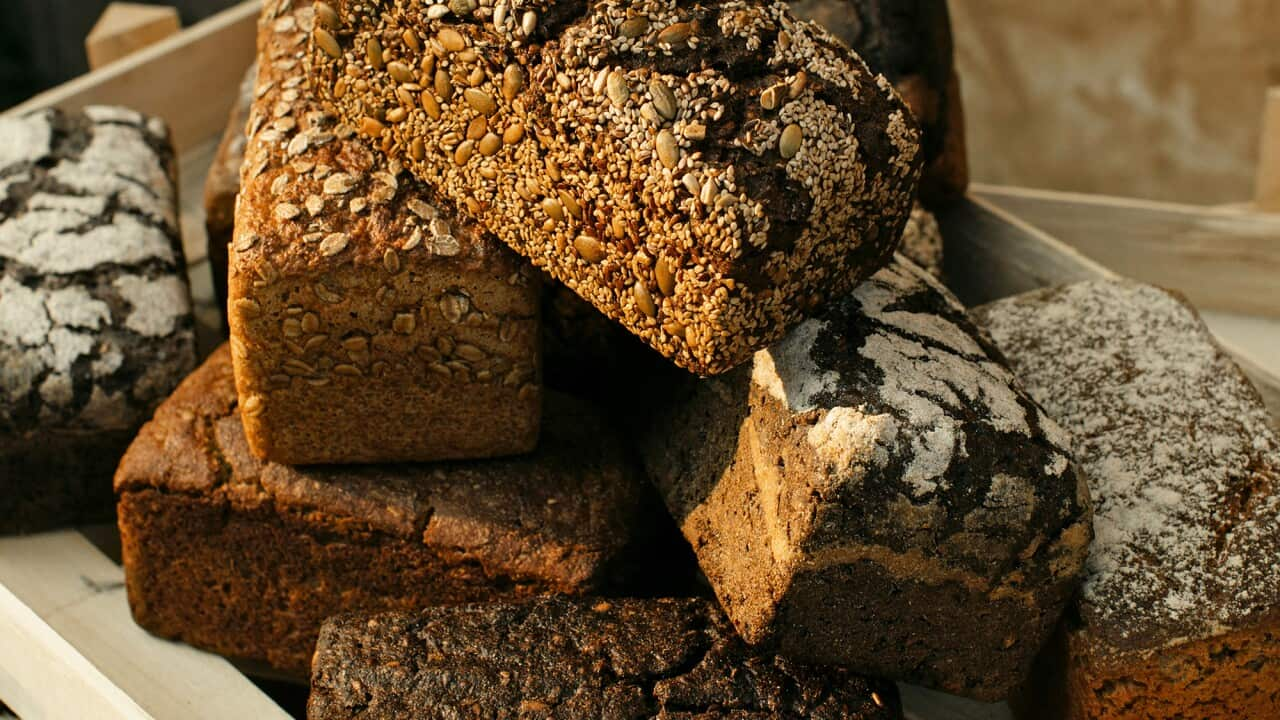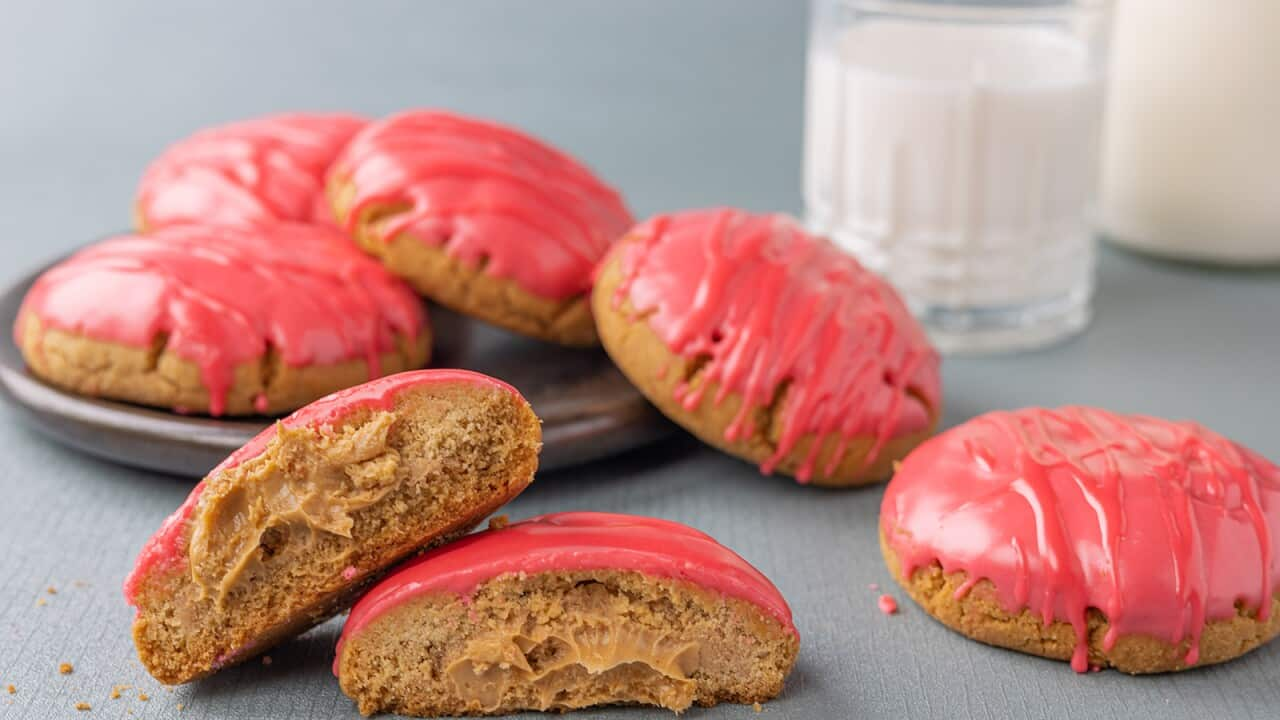Making bread requires – flour, water, salt, yeast. Good bread, however, requires these exact ingredients to be thoughtfully sourced and used.
As someone who knows a thing or two about the alchemy of these simple ingredients, Richard Hart shares his insights into doing just that, including things to look out for in each.
FLOUR
The most essential ingredient in bread is, of course, flour. Generally speaking, you can make good bread with good standard flours, as long as you’re picking the right type of flour for that particular bread. To make truly great bread, though, you’ll want great flour. Here are a few basics to consider in choosing your flour:
Protein content
, the thing that gives wheat flour its specific structure and character, is composed of two proteins: glutenin, which gives dough strength, and gliadin, which gives it extensibil-ity, or the ability to stretch and rise. Generally speaking, the higher the protein content in a flour, the stronger and more extensible the dough will be.
Bread flour (called strong wheat flour in the UK) typically has a 12% to 14% protein content, all-purpose flour (or soft wheat flour) has 9% to 11%, whole wheat flour has 11% to 15%, and pastry flour has 8% to 9%.

Richard Hart is passionate about good bread. Credit: Hardie Grant Books
Milling method
Milling is an often overlooked and misunderstood art. It’s not in any way an easy or simple process, and it takes a shit ton of experience and passion to do it well. The greatest millers are as important to creating great flour as the farmers who grow the wheat, and the terroir it grows in.
There are two primary types of milling: stone-ground and roller-milled. The flour I use is roller-milled, which may surprise you. There is certainly a romantic attachment to stone-ground, but it’s a bit like the romance around wood-fired ovens. I love them, but I’m looking for a bit more control. Used with love and skill, technology doesn’t have to be ugly.
When flour is stone-ground, the grain is given a single pass, under high pressure, which can overheat the wheat kernel and damage the starch and the protein within. If the kernel is damaged, the oils in the germ are released, and the wheat is more vulnerable to oxidation and rancidity.

Great bread adds to any meal. Credit: Hardie Grant Books / Maureen Evans
The big industrial roller mills often use higher pressure for higher yields, which can also damage the starch and the protein, and doesn’t make great flour. As Danny says, “It’s not the machine, it’s the method.” My millers use small batches, and handle their machinery very delicately, to get beautiful results. It has huge advantages for the end product.
Freshness
For the reasons described above, stone-ground flour has a shorter shelf life than roller-milled flour. Ideally, you should use stone-ground flour within a month of milling, or keep it fridge cold, prolonging shelf life. Roller-milled flour, if milled correctly, as described, has a longer shelf life, up to a year.
No matter which type you use, always look for the freshest flour with the latest sell-by date. Storing flour in the refrigerator, tightly sealed, will extend its shelf life, but bring it back to room temperature before mixing it into a dough.
SALT
My advice about salt is to use the best quality you can find and afford, with no additives. At my bakery, we use a very good-quality grey sea salt from France.
WATER
I can obviously be very exacting about flour and salt, but I’m not precious about water. I don’t know how much of a difference it makes to use filtered or treated water. Wherever I have baked, all over the world, I have used the water that’s available to the building and have never run into problems. In some places where the water is chlorinated, in theory the chlorine could inhibit microbes in the starter, but I haven’t experienced it.
YEAST
There’s a somewhat deserved prejudice out there against commercial yeast. It’s played a big part in the rise of mass-produced, industrial bread with no nutritional value, because it made it possible to speed up the baking process. A bread that takes eight hours to proof using a natural sourdough leaven will take just two hours when leavened with commercial yeast. The problem is that by shortcutting the process of leavening, the bread doesn’t have time to truly ferment, and the loss of flavour and texture in the final product is profound. Also, wheat that hasn’t been fermented properly isn’t great for your digestion and has contributed to the rise of gluten intolerance.
But commercial yeast is not your enemy. Although some purist sourdough bakers think commercial yeast is evil, and although I work predominantly with sourdough, in certain bread recipes I also use commercial yeast. (I prefer instant dry to active dry because it’s milled finer and doesn’t require blooming in water before mixing. And I prefer instant dry to fresh yeast because I find it a more stable and consistent product.)

Crumpets made with sourdough discard. Credit: Hardie Grant Books / Maureen Evans
I use yeast to make better bread, not easier, shittier bread. You should use commercial yeast because you know what you want, and you know what you’re doing.
Commercial yeast is a great tool for making certain breads, such as baguettes, focaccia and English muffins. It’s a must for proofing enriched breads like Brioche, whose high fat content would otherwise fuck up the fermentation. You can make sourdough baguettes, sourdough brioche, sourdough croissants. They taste good and look good, but I don’t think you get quite the same result as you do with commercial yeast, which makes those breads and pastries lighter, with a more tender texture that I prefer. Why not celebrate what yeast can do, and use it correctly and wisely?
Breads made with commercial yeast get stale much more quickly than sourdough and are really only good on the day you make them.
I use yeast to make better bread, not easier, shittier bread.
I’ve worked in a few bakeries that won’t allow a single grain of commercial yeast in the door, for fear that it will completely take over the natural fermentation at work in sourdough. It’s true: commercial yeast is stronger and more active than the naturally occurring yeast in sourdough, and if added directly to it, it would bully its way around the bucket and establish itself as the dominant strain, making for a less-complex flavor in your bread. However, within a few days, with consistent feedings, it would work its way out, and the yeasts would once again diversify.
At my bakery, each morning we mix our sourdoughs before we touch any of the commercial yeast fermentations, and we are meticulous with handwashing, especially after working with those doughs that contain commercial yeast.
A final word: Our choices matter
I want to support sustainable and regenerative farming wherever possible. I choose organically grown ingredients. Pesticides and herbicides destroy the and the health of the soil. These chemicals also get into our water supply, and into the crops we eat, and so, ultimately, into us.
I choose eggs from free-range chickens. I don’t agree that animals should live in cages.
I always use full-fat, organic dairy and pure honey without added sugar. I believe in the goodness of natural foods that haven’t been tampered with.
When it comes to ingredients from further afield, like tea, coffee and chocolate, they don’t just come from a box on the shelf, and it’s every bit as important to know who makes them, probably more. I want to know that I am supporting, rather than exploiting, marginalised agricultural communities. Fancy packaging and certifications can be deceptive and misleading. It’s more important to do research and source ingredients carefully.
It’s not always easy to find the good guys, but it’s worth doing. I look for companies that are working directly with growers in a supportive and respectful relationship. A lot of these products come to you through a series of faceless brokers who manipulate the price and take all the value and profit, getting richer off someone else’s hard work and hardship. It doesn’t have to be that way. There are companies, such as Rare Tea Company and La Rifa chocolate in Mexico, that work for a more sustainable future, for the land and the people who live and work on it to thrive.

Richard Hart's book includes 60 recipes sharing his sourdough expertise. Credit: Hardie Grant Books





